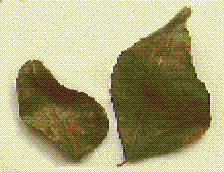
Called as Kadhi patta in India, they come from a small plant of citrus family. Used fresh or dried, they have a warm and appetizing aroma and give a delicate spicy flavor to the dish in which they are used. Curry leaves are used extensively in South Indian food often with coconut.
It is a small tree, growing 4-6 m tall, with a trunk up to 40cm diameter. The leaves are pinnate, with 11-21 leaflets, each leaflet 2-4 cm long and 1-2 cm broad. They are highly aromatic. The flowers are small, white, and fragrant. The small black shiny berries are edible, but their seeds are poisonous.
The species name commemorates the botanist Johann König.
The leaves are highly valued as seasoning in southern and west-coast Indian cooking, and Sri Lankan cooking, much like bay leaves, and especially in curries, usually fried along with the chopped onion in the first stage of the preparation. They are also used to make thoran, vada, rasam and kadhi. In their fresh form, they have a short shelf life, and they don't keep well in the refrigerator. They are also available dried, though the aroma is largely inferior.
The leaves of Murraya koenigii are also used as a herb in Ayurvedic medicine. Their properties include much value as an anti-diabetic,[2] antioxidant,[3] antimicrobial, anti-inflammatory, hepatoprotective, anti-hypercholesterolemic etc. Curry leaves are also known to be good for hair, for keeping it healthy and long. They also contain iron.
Although most commonly used in curries, leaves from the curry tree can be used in many other dishes to add spice.

| < Prev | Next > |
|---|
